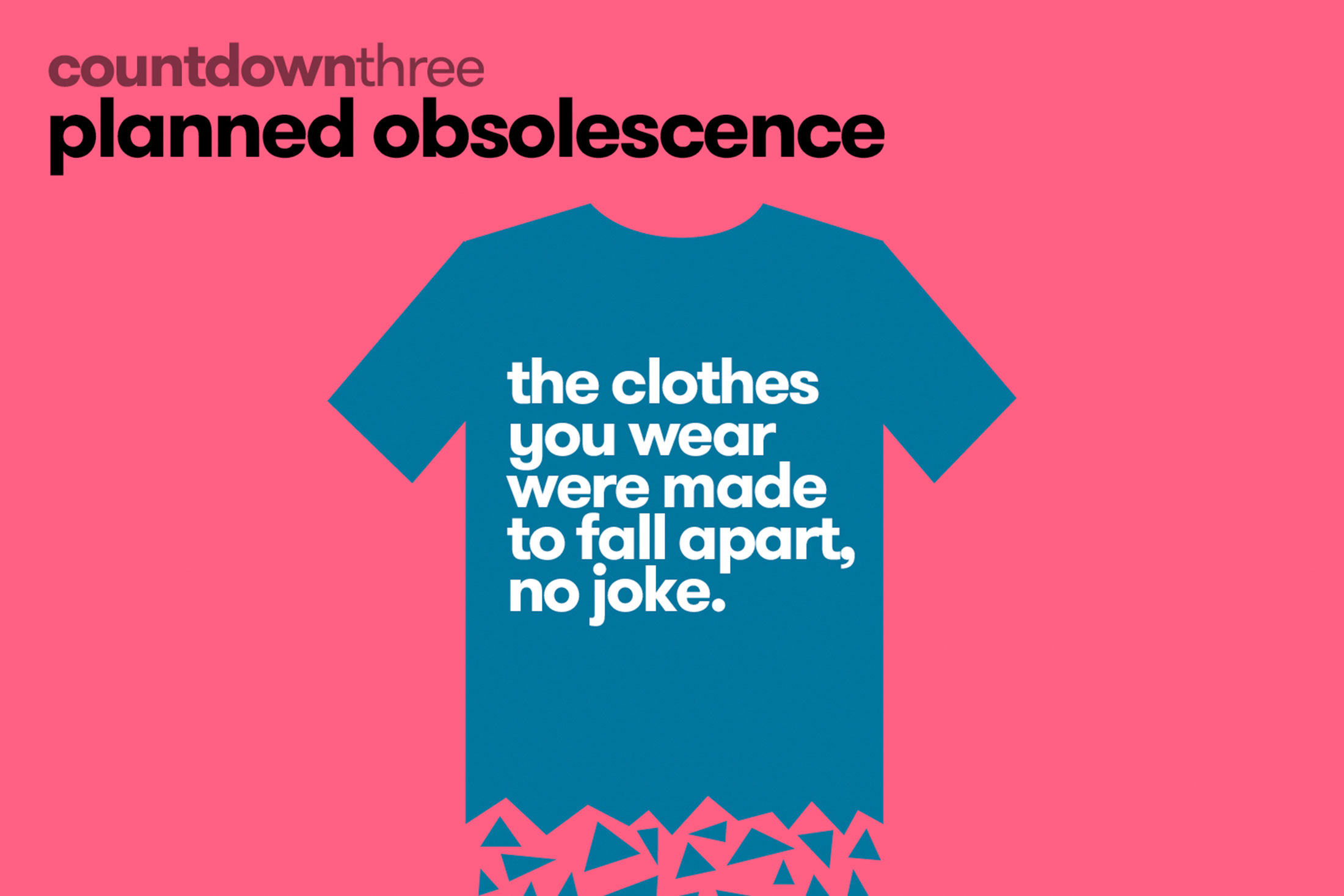Each generation wears more clothes than the last, from our grandparents, to our parents, and to us now…but most don’t really know why this happens. Well here’s the secret: our clothes have been designed and manufactured to fall apart – it’s called ‘planned obsolescence‘. In simple terms, companies use this methodology to ensure that you come back to buy more; after all, a product that lasts forever only needs to be bought once – and that’s just not good business. I say this in an understanding tone rather than a critical one.
 With my experience in fashion, I recently gave a talk about planned obsolescence at an event in Shanghai, and the reaction wasn’t surprise but a slow realisation. This isn’t just in fashion like with socks or H&M, but everywhere. We start to think about the rate we go through laptops, blenders, and washing machines compared to the older generations and wonder to ourselves ‘how are things breaking down faster even though technology is improving’? Consumer electronics such as smartphones are designed to be replaced ideally every two years; it’s not a coincidence that the phone plans and new product releases coincide. You don’t like it and want to be a hardcore resistor to the change? They’ll force software updates and security that makes your phone slow. Still okay with that? Then they’ll change all the available chargers and parts so your old phone is not longer supported. It’s not only the products that are designed with replacement in mind, but the entire ecosystem around it as well. Want an example? Look no further than at Apple’s planned obsolescence with their non-replaceable batteries and other strategies.
With my experience in fashion, I recently gave a talk about planned obsolescence at an event in Shanghai, and the reaction wasn’t surprise but a slow realisation. This isn’t just in fashion like with socks or H&M, but everywhere. We start to think about the rate we go through laptops, blenders, and washing machines compared to the older generations and wonder to ourselves ‘how are things breaking down faster even though technology is improving’? Consumer electronics such as smartphones are designed to be replaced ideally every two years; it’s not a coincidence that the phone plans and new product releases coincide. You don’t like it and want to be a hardcore resistor to the change? They’ll force software updates and security that makes your phone slow. Still okay with that? Then they’ll change all the available chargers and parts so your old phone is not longer supported. It’s not only the products that are designed with replacement in mind, but the entire ecosystem around it as well. Want an example? Look no further than at Apple’s planned obsolescence with their non-replaceable batteries and other strategies.

 From a business perspective, planned obsolescence is really quite genius for various reasons. Firstly, there’s higher sales volume because people buy more often. Secondly, by creating an artificial lifespan for a product you reduce the amount of time between repeat purchases (shortened replacement cycle) – this creates higher rates of customer retention. So if a customer buys from a brand more frequently, it becomes more ingrained in them to naturally come back – one of the most important KPIs for brand marketers. But there are skeptics who protest ‘if I buy something and it doesn’t last long, I simply won’t buy from them again!’. What we need to understand is: ‘lasting long’ is relative to our experience and expectations in comparison to what’s standard across the industry. Companies don’t drastically reduce lifespans of products overnight but rather work together systematically over time to lower the standards across the entire industry (look at how lightbulb started out).
From a business perspective, planned obsolescence is really quite genius for various reasons. Firstly, there’s higher sales volume because people buy more often. Secondly, by creating an artificial lifespan for a product you reduce the amount of time between repeat purchases (shortened replacement cycle) – this creates higher rates of customer retention. So if a customer buys from a brand more frequently, it becomes more ingrained in them to naturally come back – one of the most important KPIs for brand marketers. But there are skeptics who protest ‘if I buy something and it doesn’t last long, I simply won’t buy from them again!’. What we need to understand is: ‘lasting long’ is relative to our experience and expectations in comparison to what’s standard across the industry. Companies don’t drastically reduce lifespans of products overnight but rather work together systematically over time to lower the standards across the entire industry (look at how lightbulb started out).
Now if we buy a shirt and throw it away after a few months we think it’s a bargain – times have certainly changed.

